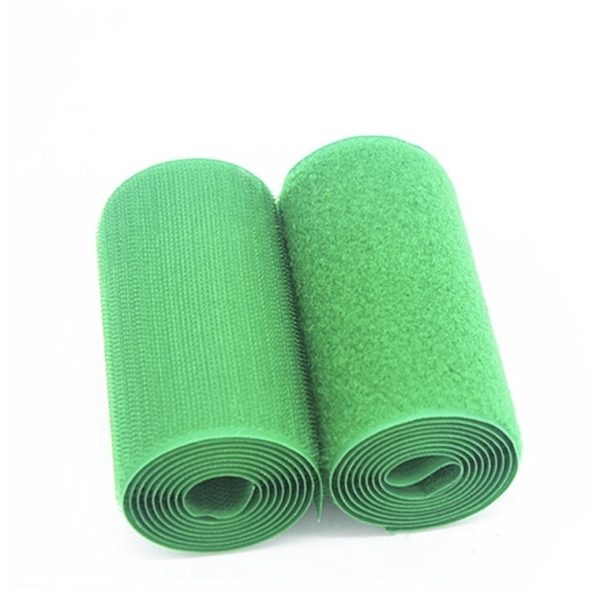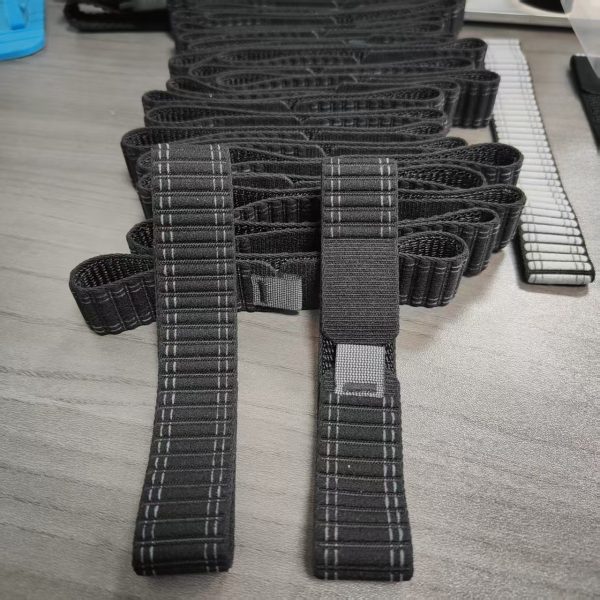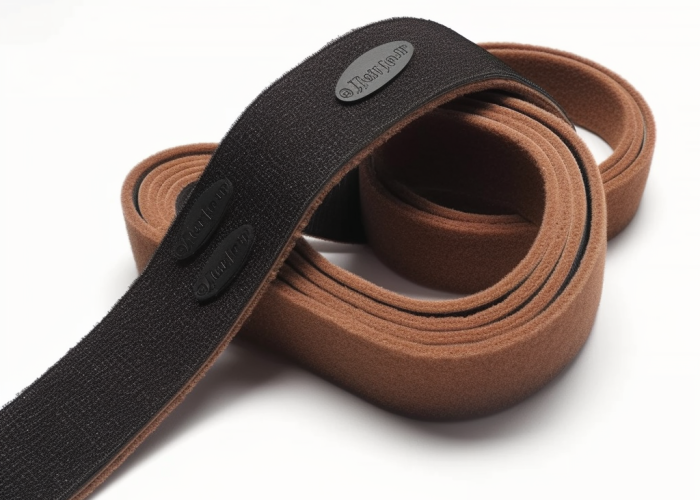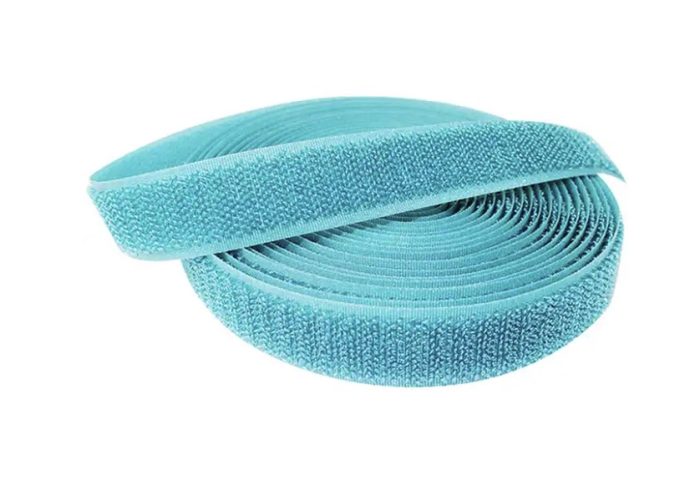With 15+ years in custom webbing manufacturing, we’ve mastered material compatibility for hook and loop systems. Our engineering expertise helps product developers solve fastening challenges through precision-engineered combinations that meet exact specifications for strength, durability, and environmental resistance.
Yes, nylon hooks can effectively be used with polyester loops in hook and loop fastening systems. This cross-material combination offers unique performance advantages including enhanced environmental durability, expanded design options, and potential cost efficiencies when properly implemented with appropriate adhesives and testing.
Below, we’ll examine the specific properties enabling this compatibility, provide comparative performance metrics, and offer practical implementation guidance for both standard and demanding applications.


Webbing manufacturing expert with 15+ years of experience helping product developers build high-performance straps for industrial, medical, and outdoor use.
Nylon hooks are compatible with polyester loops because both materials share complementary mechanical properties, including similar tensile strength, flexibility, and surface characteristics. The molecular structure of nylon provides excellent grip strength while polyester loops offer superior resistance to environmental factors, creating an effective fastening system when combined properly.
The performance characteristics of these materials create excellent mixed applications:
Property Nylon Hooks Polyester Loops Mixed Solution Performance
Tensile Strength High (70–85 MPa) Medium-High (55–75 MPa) Good overall strength
Durability Good with some UV sensitivity Excellent with high UV resistance Enhanced environmental durability
Temperature Resistance -40°C to 93°C -40°C to 150°C Wide temperature range (up to 93°C)
Chemical Resistance Good but vulnerable to acids Excellent resistance Improved overall chemical resistance
Flexibility High Medium Good overall flexibility
Nylon hooks feature excellent engagement properties due to their molecular structure, which provides the ideal balance of rigidity and flexibility needed for repeated fastening cycles. The semi-crystalline polymer structure gives nylon hooks sufficient stiffness to maintain their shape while allowing enough flexibility to engage with polyester loops.
Polyester loops complement nylon hooks through their excellent durability characteristics. The material’s resistance to abrasion, UV exposure, and chemical degradation makes it ideal for forming the loop side of the fastening system.
Key Takeaways:
Material properties significantly impact hook and loop performance through four key factors: tensile strength, environmental resistance, cycle durability, and engagement force. Each material contributes different performance characteristics to the fastening system, with material grade, manufacturing process, and environmental conditions all affecting the overall performance.
Tensile strength varies between materials, with nylon hooks providing excellent initial strength while polyester loops offer more consistent long-term engagement. Environmental factors affect each material differently – nylon is more susceptible to UV degradation while polyester maintains structural integrity in harsh conditions.
Manufacturing processes significantly influence performance. The heat-setting during production affects crystallinity of both materials, which impacts their mechanical properties and engagement effectiveness. Color and texture selections also influence performance beyond aesthetics – darker colors absorb more UV radiation, potentially accelerating degradation in outdoor applications.
Key Takeaways:

Mixing nylon hooks with polyester loops provides four key benefits: optimized environmental performance, expanded design flexibility, cost efficiency, and enhanced product customization options. This combination leverages complementary properties to create fastening solutions that exceed single-material systems in specific applications.
Mixed systems offer superior environmental performance across diverse conditions. Polyester loops provide excellent UV resistance while nylon hooks deliver superior engagement force. This allows reliable performance in environments where single-material systems might fail.
Design flexibility expands significantly with mixed materials. Product developers can select specific material grades and manufacturing processes that optimize performance for particular applications. This flexibility allows for creating fastening solutions with precisely tailored characteristics rather than accepting the limitations of single-material systems.
Key Takeaways:
When mixing nylon hooks with polyester loops, potential challenges include thermal expansion differences, color matching difficulties, and varying degradation rates. These issues can affect both aesthetic appearance and long-term performance if not properly addressed during product development.
Differential thermal expansion between nylon and polyester can cause dimensional stability issues in applications with temperature fluctuations. Nylon typically expands more than polyester when heated, which can affect closure strength and potentially cause material warping in extreme conditions.
Manufacturing consistency presents another challenge. Ensuring uniform material properties across production batches requires strict quality control protocols. Without these measures, performance variability may occur between production runs, leading to inconsistent product performance.
Key Takeaways:
Temperature significantly affects nylon-polyester hook and loop combinations by influencing material flexibility, dimensional stability, and long-term performance characteristics. Nylon hooks demonstrate decreased stiffness at higher temperatures, while polyester loops maintain dimensional stability across a wider temperature range.
In cold environments (below 0°C), nylon hooks become more rigid, potentially reducing engagement effectiveness. Polyester loops maintain better flexibility in cold conditions. In high heat (above 80°C), nylon approaches its glass transition temperature, becoming more pliable and potentially reducing closure strength.
Repeated temperature cycling accelerates fatigue in both materials but affects nylon more significantly. Applications that experience frequent temperature changes should incorporate design considerations to mitigate these effects, such as oversized hook areas or reinforced attachment points.
Key Takeaways:

Mixed nylon-polyester hook and loop materials are suitable for outdoor products when properly designed with UV protection additives and moisture-resistant coatings. The polyester loop component provides excellent UV resistance while nylon hooks can be specially treated to enhance weather resistance properties.
Outdoor applications face three primary environmental challenges: UV radiation, moisture exposure, and temperature fluctuations. Untreated nylon degrades more quickly under UV exposure, potentially becoming brittle after prolonged sun exposure. Polyester naturally resists UV degradation better, maintaining structural integrity longer in outdoor settings.
Moisture absorption affects performance of mixed systems, with nylon absorbing more moisture than polyester. This differential absorption can affect closure strength and material dimensions during wet-dry cycles. Specially formulated coatings can mitigate these effects, enhancing overall outdoor performance.
Key Takeaways:
The best adhesive options for mixed nylon-polyester hook and loop materials include acrylic-based pressure-sensitive adhesives, polyurethane adhesives, and specialized rubber-based formulations. Each adhesive type offers different performance characteristics regarding initial tack, temperature resistance, and long-term durability.
Acrylic-based pressure-sensitive adhesives provide excellent long-term adhesion and environmental resistance. These adhesives bond well to both nylon and polyester surfaces, maintaining adhesion through temperature fluctuations and moderate exposure to moisture. They typically offer the best overall performance for most applications.
Rubber-based adhesives deliver exceptional initial tack strength, creating immediate bonds that achieve handling strength quickly during manufacturing. However, these adhesives generally offer reduced environmental resistance compared to acrylic formulations, making them better suited for indoor applications or short-term use.
Alternative attachment methods include sewing, ultrasonic welding, and heat bonding. These techniques offer superior durability for high-stress applications where adhesive systems might fail. For products exposed to extreme conditions, mechanical fastening or sewn attachment may provide more reliable long-term performance.
Key Takeaways:

Mixed nylon-polyester hook and loop systems provide optimized performance through complementary material properties. Understanding these interactions allows product developers to create superior fastening solutions with enhanced environmental resistance, durability, and application-specific performance. Contact our engineering team today to develop custom hook and loop webbing solutions perfectly tailored to your product specifications and performance requirements.
Yes, nylon hooks can be effectively combined with polyester loops, creating a functional fastening system. This combination leverages nylon’s excellent hook formation properties with polyester’s superior environmental resistance. The reverse combination (polyester hooks with nylon loops) is technically possible but generally offers inferior performance characteristics.
Mixed nylon-polyester systems typically offer 85-90% of the shear strength of pure nylon systems but with improved environmental durability. While there is a slight reduction in maximum shear strength, the mixed system maintains performance consistency over a wider range of conditions and generally exhibits better long-term strength retention.
Mixed material hook and loop systems typically cost 10-15% more than single-material systems but offer substantially improved performance in demanding applications. The increased cost is offset by longer service life, reduced replacement frequency, and enhanced reliability in critical applications where fastener failure would result in significant product issues.
Minimum order quantities for customized hook and loop webbing typically start at 500 meters for standard widths and 1,000 meters for custom widths or special treatments. Sample quantities (25-50 meters) can be produced for testing and validation before full production runs. Volume pricing tiers provide cost advantages for larger projects requiring 5,000+ meters.
Key environmental factors include UV exposure, moisture levels, temperature ranges, and chemical exposure. Nylon components are more susceptible to UV degradation and moisture absorption, while polyester offers better resistance to these factors. For outdoor or harsh environments, specially treated nylon hooks with UV stabilizers should be specified.
Custom mixed hook and loop systems typically require 3-4 week lead times, with minimum order quantities starting at 500 meters. Working with a specialized manufacturer allows for precise specification of material properties, colors, and attachment methods. Material availability, especially for specialized grades or colors, may affect production scheduling.